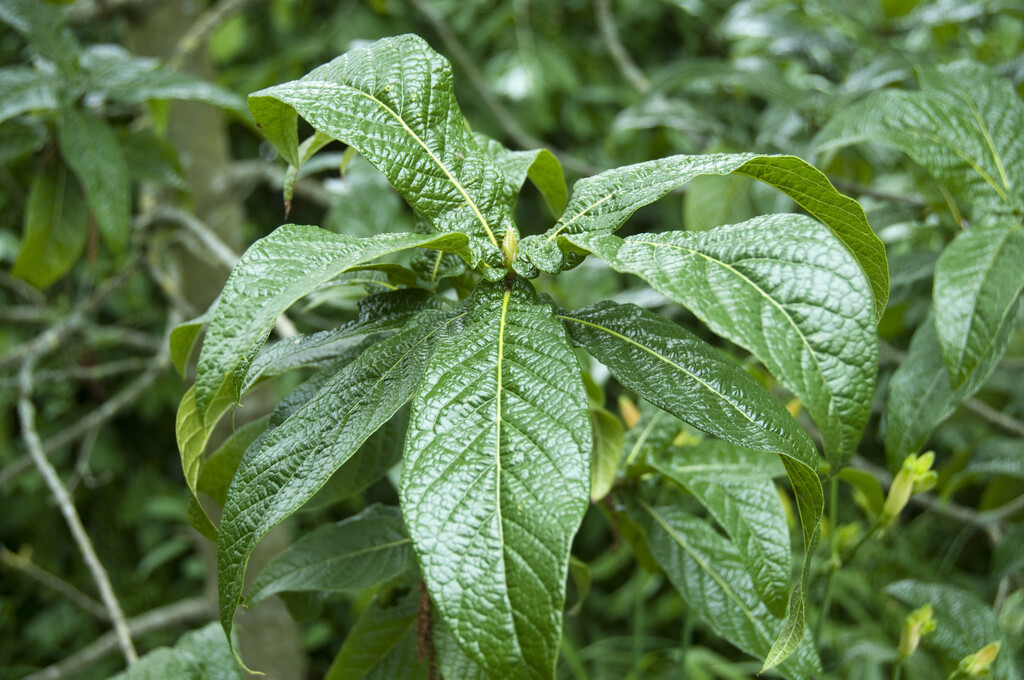Quercus rysophylla
loquat oak
An evergreen, strong-growing, spreading tree to 20m tall with elliptic to lance-shaped, wavy-edged leaves to 2cm long and 8cm wide. New, downy leaves emerge in spring and sometimes summer a reddish-purple colour before maturing to a glossy, dark green with prominent veins and a blistered or puckered appearance. Small, ovoid acorns 1-1.5cm long follow inconspicuous flowers
Size
Ultimate height
Higher than 12 metresTime to ultimate height
more than 50 yearsUltimate spread
Wider than 8 metresGrowing conditions
Moisture
Moist but well–drained, Well–drainedpH
Acid, Alkaline, NeutralColour & scent
| Stem | Flower | Foliage | Fruit | |
| Spring | Green Yellow | Purple Red Green | ||
|---|---|---|---|---|
| Summer | Purple Red Green | |||
| Autumn | Green | Brown | ||
| Winter | Green |
Position
- Full sun
Aspect
North–facing or West–facing or South–facing or East–facing
Exposure
Exposed or Sheltered Hardiness
H5Botanical details
- Family
- Fagaceae
- Native to GB / Ireland
- No
- Foliage
- Evergreen
- Habit
- Bushy
- Potentially harmful
- Pets (dogs): Harmful if eaten - for further information and contact numbers regarding pets, see the HTA guide to potentially harmful plants
- Genus
Quercus can be deciduous or evergreen trees or shrubs, with entire, lobed or toothed leaves; flowers inconspicuous, followed by characteristic acorns; sometimes good autumn colour
- Name status
Correct
- Plant range
- Mexico
How to grow
Cultivation
Grow in a fertile, well-drained soil in full sun. Does best when sheltered from cold, drying winds
Propagation
Propagate by seed or by grafting
Suggested planting locations and garden types
- Low Maintenance
Pruning
Pests
May be susceptible to oak processionary moth, aphids, caterpillars, leaf-mining moths and oak gall wasps
Diseases
May be susceptible to powdery mildews and honey fungus
Love gardening
Sign up to receive regular gardening tips, inspiration, offers and more
View our Privacy Policy
Get involved
The Royal Horticultural Society is the UK’s leading gardening charity. We aim to enrich everyone’s life through plants, and make the UK a greener and more beautiful place.
